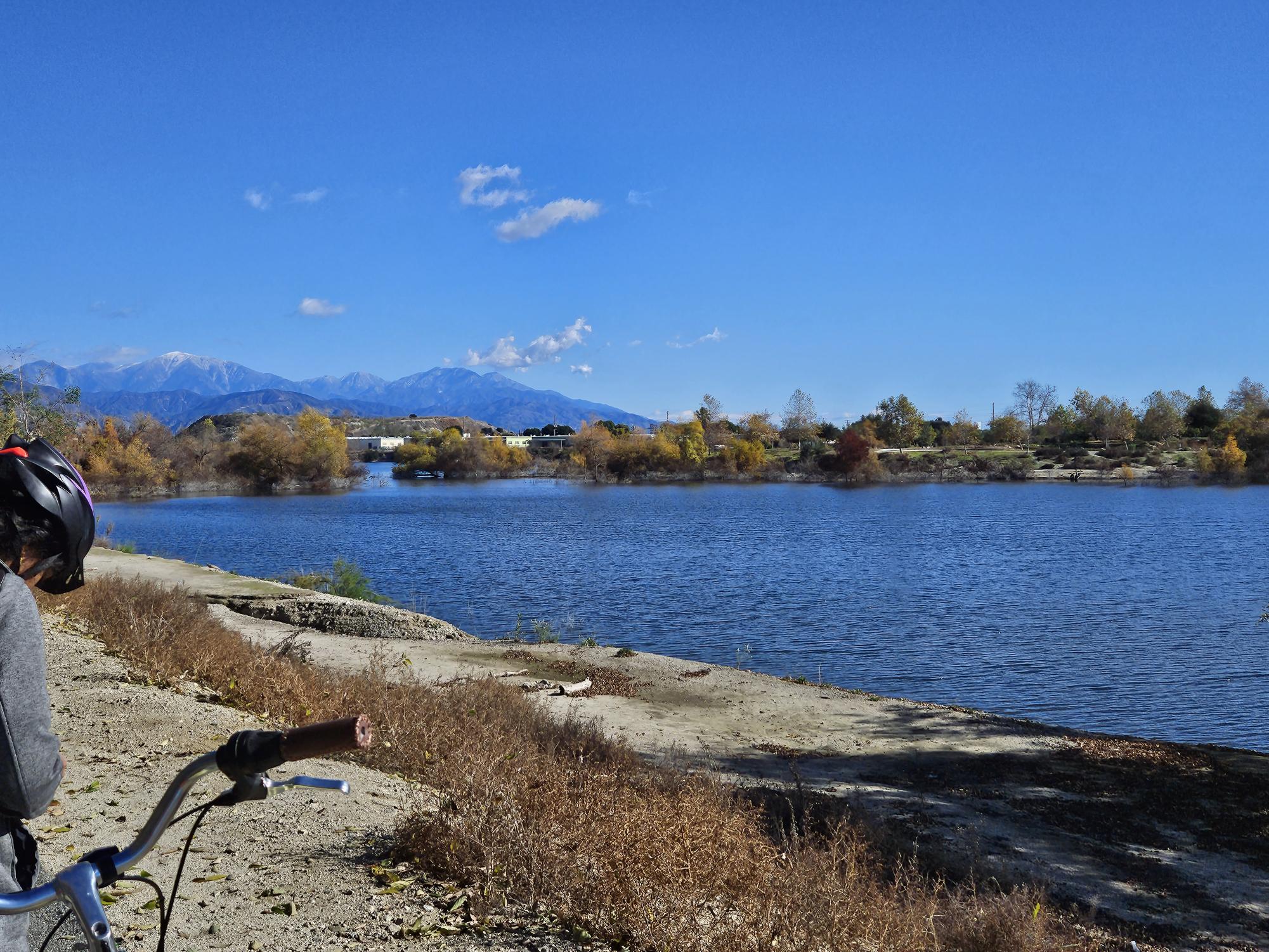In early Jan. 2024, I spent most of my time nervously helicoptering my phone, tracking rain patterns and their swirling eddies on weathertracker.com. Mottled hues of lime greens and crimson reds contoured the sky over most of Los Angeles. The imminent flash flooding alerts on our phones—complete with a resounding, apocalyptic drone—further delayed our plans. It seemed apparent that there would be no sunlight or dry pavement for some time. Not ideal, I thought.
Having planned a bike ride with my friends for months, the prospect of our trip in this weather was dwindling. As nature enthusiasts, the Peck Road Water Conservation Park in Arcadia, CA, is our go-to birdwatching locale. This urban greenspace is nestled between residential and industrial areas and features an artificial reservoir home to numerous native bird species on any given day. However, we were shocked to discover the bike path had gone missing. The rain had overflowed from the reservoir, covering the only route connecting the North and South sides. We were stuck with no chance of our bikes passing this river.
My birding expedition might have had an unfortunate end, but it began my deep dive into the greater social-climate issue. Climate change has altered California’s drought-accustomed hydrologic system, causing severe weather events ranging from extremely dry to extremely wet. This is a problem for our infrastructure—roads, sidewalks, and reservoirs—which aren’t equipped to handle heavy rains. When reservoirs exceed maximum capacity, structural damage ensues—this precious water is wasted, and people stuck in floods’ paths are at risk.
Our arid state has too often become accustomed to droughts, but with a shift in weather patterns, much of this water has been regarded (with awe) and wasted. The 2023 Sustainable Water Infrastructure Project aimed to collect and store the 40 million gallons of water entering Santa Monica Bay. It’s a whopping number, but small when you regard the entirety of the system—roughly 159.7 million gallons (data acquired from the The Pacific Institute in ft-acres and converted to gallons).
The Associated Press (AP) News interviewed Sunny Wang, the Santa Monica water resources manager, early last year due to his involvement in the project. “It’s a big number we’re capturing, but it’s a small percentage of the watershed,” he said. “Billions of gallons of stormwater enter Santa Monica Bay each year.”
Santa Monica’s step towards water conservation is monumental for its city but needs to be echoed across the state. With similar projects backed by local leadership and funded along the Pacific coast, our state can maximize water resources.
California needs more significant investment toward infrastructure in the low-income areas where it matters the most. This upcoming election season, I want to see candidates who care about their voter base, not just the top 1% of donors. Candidates who understand the struggle of getting to school by foot in a foot of floodwater or the struggles of having emphysema in wildfire smoke. California needs a coalition of elected officials who will treat the climate crisis seriously. This means acknowledging that while fossil fuel-based industries are to blame for the bulk of carbon emissions, it’s the lower-income communities that suffer most from the consequences.
Like Peck Road’s flood-prone infrastructure, highly concrete-fortified reservoirs are often tenting locations for the unhoused. When faulty or insufficiently drained reservoirs flood, poorly maintained roads flood, leaving car-less populations unable to get around. These recent storms have not only been a nightmare for the unhoused but also students who walk or bike to school. State officials must support communities where most students rely on public transportation or walking/biking to get to school.
As a young Californian of voting age, I want to see candidates who care about climate change from a social perspective. Also, local birders like me want to see real action put forth by legislation that protects the parks and natural lands we cherish. I want to share my passion for this spectacular Earth by preserving its raw, untouched beauty for generations to come. This November, I hope to see this sentiment in action.
Photo courtesy of FLICKR.COM















Jolee • Apr 30, 2024 at 11:00 AM
Fire article